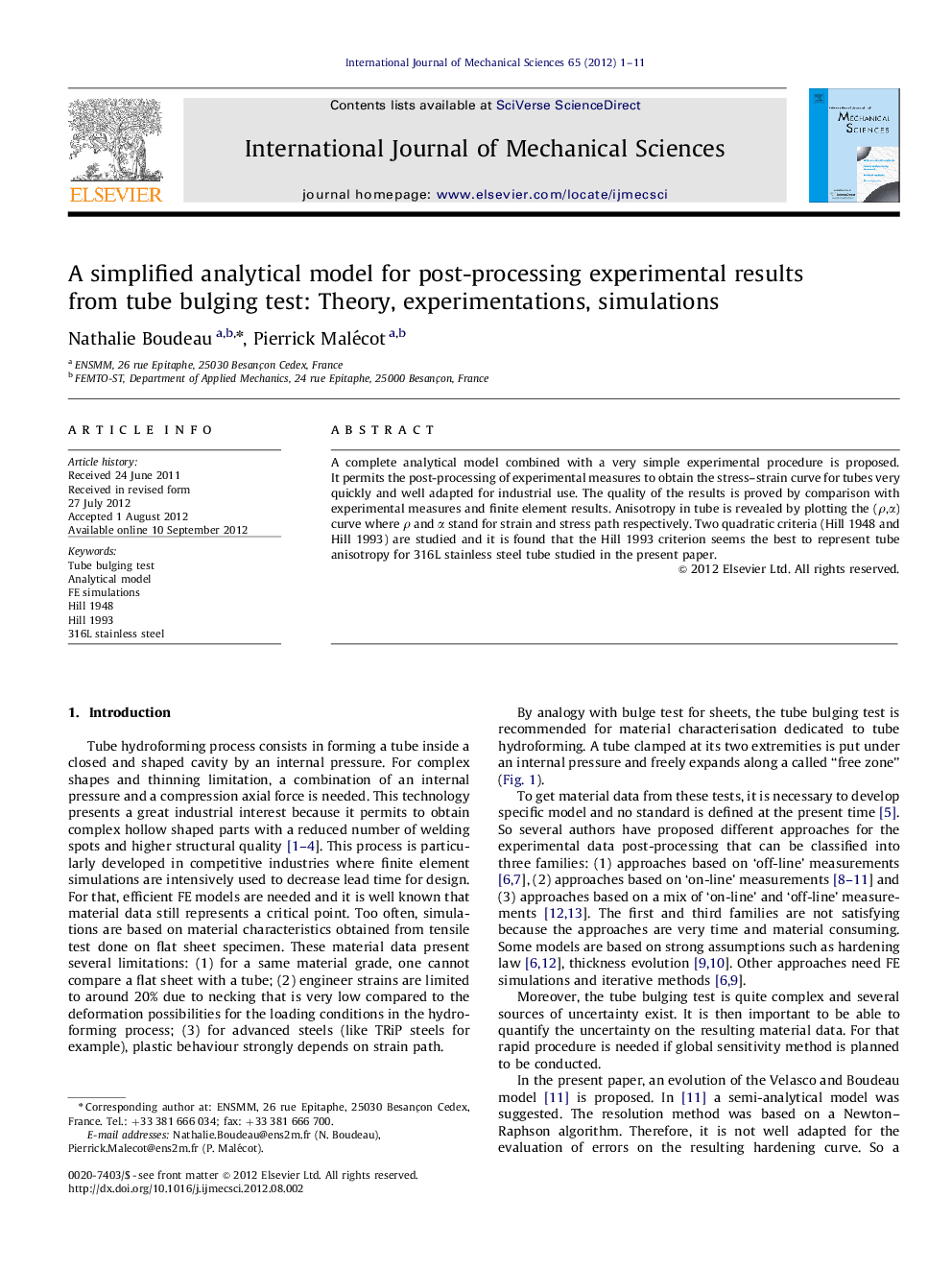| Article ID | Journal | Published Year | Pages | File Type |
|---|---|---|---|---|
| 785842 | International Journal of Mechanical Sciences | 2012 | 11 Pages |
A complete analytical model combined with a very simple experimental procedure is proposed. It permits the post-processing of experimental measures to obtain the stress–strain curve for tubes very quickly and well adapted for industrial use. The quality of the results is proved by comparison with experimental measures and finite element results. Anisotropy in tube is revealed by plotting the (ρ,α) curve where ρ and α stand for strain and stress path respectively. Two quadratic criteria (Hill 1948 and Hill 1993) are studied and it is found that the Hill 1993 criterion seems the best to represent tube anisotropy for 316L stainless steel tube studied in the present paper.
Graphical abstractFigure optionsDownload full-size imageDownload as PowerPoint slideHighlights► Analytical model joint with a simple and efficient experimental procedure is proposed for tube bulging test post-processing. ► It permits to get accurate material data for tube hydroforming simulations in a way adapted to industrial constraints. ► Comparisons of experimental measures, numerical simulations and results from the model validate the approach. ► Anisotropy of drawn 316L tube is revealed by plotting the strain path vs. and stress path. ► It is found that Hill 1993 criterion is the most adapted for modelling plastic anisotropy of tube.
